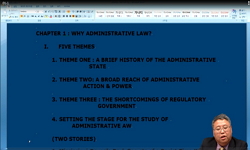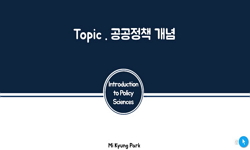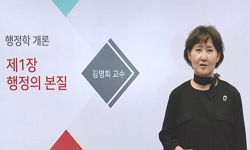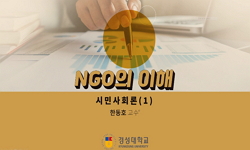The main purpose of this study is to investigate the factors that have an impact on public policy, green products and technology in Kuala Lumpur, given government initiatives to boost the environment awareness. The data used in this study was collecte...
http://chineseinput.net/에서 pinyin(병음)방식으로 중국어를 변환할 수 있습니다.
변환된 중국어를 복사하여 사용하시면 됩니다.
- 中文 을 입력하시려면 zhongwen을 입력하시고 space를누르시면됩니다.
- 北京 을 입력하시려면 beijing을 입력하시고 space를 누르시면 됩니다.
Linkage between Public Policy, Green Technology and Green Products on Environmental Awareness in the Urban Kuala Lumpur, Malaysia
한글로보기https://www.riss.kr/link?id=A103800808
-
저자
Md. Khaled Saifullah (University of Malaya) ; Fatimah Binti Kari (University of Malaya) ; Md. Arphan Ali (University of Malaya)

- 발행기관
- 학술지명
- 권호사항
-
발행연도
2017
-
작성언어
Korean
- 주제어
-
자료형태
학술저널
-
수록면
45-53(9쪽)
-
KCI 피인용횟수
3
- 제공처
-
0
상세조회 -
0
다운로드
부가정보
다국어 초록 (Multilingual Abstract)
The main purpose of this study is to investigate the factors that have an impact on public policy, green products and technology in Kuala Lumpur, given government initiatives to boost the environment awareness. The data used in this study was collected by distribution questionnaires randomly in six areas of Kuala Lumpur and 400 respondents were interviewed. Based on a literature review, three hypotheses were stated and tested using structural equation modeling (SEM). SEM is a statistical analysis method that involved two or more variables in analyzing structural relationships among the variables. The SEM model shows that green products and government policies have a direct influence on environmental awareness. However, green technology does not have a direct influence on environmental awareness. Since, knowledge on green technology does not have a significant impact on raising environmental awareness among the public, a much more pragmatic awareness campaign needs to be put in place to use green technology as a part of modern living. The study suggests that the urban population needs to be more aware of the environmental issue as cities tend to have better infrastructure to raise public awareness on green issues. Moreover, the government should increase the environmental awareness among younger generation through workshops, seminars, campaigns, and pamphlets.
목차 (Table of Contents)
- 1. Introduction
- 2. Literature Review
- 3. Research Method
- 4. Results and Discussion
- 5. Conclusion and Recommendation
- 1. Introduction
- 2. Literature Review
- 3. Research Method
- 4. Results and Discussion
- 5. Conclusion and Recommendation
참고문헌 (Reference)
1 Kounatze, C. R., "Towards green ICT strategies: Assessing policies and programmes on ICT and the environment"
2 Huq, S., "Three eras of climate change"
3 Schlegelmilch, B. B., "The value of socio-demographic characteristics for predicting environmental consciousness" 341-352, 1994
4 Luchs, M. G., "The sustainability liability : Potential negative effects of ethicality on product preference" 74 : 18-31, 2010
5 Fisman, L., "The effects of local learning on environmental awareness in children : An empirical investigation" 36 (36): 39-50, 2005
6 EPU, "Tenth Malaysia Plan 2011-2015"
7 Barr, S., "Sustainable lifestyles : Framing environmental action in and around the Home" 37 : 906-920, 2006
8 Cox, M. J., "Sustainable communication: A study of green advertising and audience reception within the growing arena of corporate social responsibility. Case study: British Petroleum" 3 : 32-51, 2008
9 Byrne, B. M., "Structural equation modeling with AMOS: Basic concepts, applications, and programming" Routledge 2016
10 Chin, W. W., "Structural equation modeling analysis with small samples using partial least squares" 2 : 307-342, 1999
1 Kounatze, C. R., "Towards green ICT strategies: Assessing policies and programmes on ICT and the environment"
2 Huq, S., "Three eras of climate change"
3 Schlegelmilch, B. B., "The value of socio-demographic characteristics for predicting environmental consciousness" 341-352, 1994
4 Luchs, M. G., "The sustainability liability : Potential negative effects of ethicality on product preference" 74 : 18-31, 2010
5 Fisman, L., "The effects of local learning on environmental awareness in children : An empirical investigation" 36 (36): 39-50, 2005
6 EPU, "Tenth Malaysia Plan 2011-2015"
7 Barr, S., "Sustainable lifestyles : Framing environmental action in and around the Home" 37 : 906-920, 2006
8 Cox, M. J., "Sustainable communication: A study of green advertising and audience reception within the growing arena of corporate social responsibility. Case study: British Petroleum" 3 : 32-51, 2008
9 Byrne, B. M., "Structural equation modeling with AMOS: Basic concepts, applications, and programming" Routledge 2016
10 Chin, W. W., "Structural equation modeling analysis with small samples using partial least squares" 2 : 307-342, 1999
11 EPU, "Sixth Malaysia Plan 1991-1995"
12 Banerjee, S., "Shades of green : A multidimensional analysis of environmental advertising" 24 (24): 21-31, 1995
13 EPU, "Seventh Malaysia Plan 1996-2000"
14 Bradley, J. C., "Relationship between environmental knowledge and environmental attitude of high school students" 30 (30): 17-21, 1999
15 Afroz, R., "Public environmental awareness and performance in Kuala Lumpur City, Malaysia : A case study on household electrical and electronic equipment" 3 (3): 385-396, 2012
16 Patchen, M., "Public attitudes and behavior about climate change: What shapes them and how to influence them" University of Purdue 2006
17 Kline, R. B., "Principles and Practice of Structural Equation Modeling" Guilford Press 2010
18 Forkink, A., "Perception, Awareness, and Acceptance of Green Kitchen Cleaners: Go Green Market Research"
19 Lee, K., "Opportunities for green marketing: Young consumers" 26 : 573-586, 2008
20 Ringle, C. M., "On the use of formative measurement specifications in structural equation modeling: A Monte Carlo simulation study to compare covariance-based and partial least squares model estimation methodologies" Maastricht University 2009
21 EPU, "Ninth Malaysia Plan 2006-2010"
22 Hair, J. F., "Multivariate Data Analysis" Prentice Hall 2010
23 Kollmuss, A., "Mind the gap: why do people act environmentally and what are the barriers to pro-environmental behavior?" 8 (8): 239-260, 2002
24 Malhotra, N. K., "Marketing research: An applied approaches third multivariate analysis" Prentice Hall 2007
25 Hoe, S. L., "Issues and procedures in adopting structural equation modeling technique" 3 (3): 76-83, 2008
26 Masud, M. M., "Impact of residents' livelihoods on attitudes towards environmental conservation behaviour : An empirical investigation of Tioman Island Marine Park area, Malaysia" 93 : 7-14, 2014
27 Leiserowitz, A., "Human development report 2007/ 2008: Fighting climate change: Human solidarity in a dividend world" UNDP 2007
28 Doss, C. R., "How does gender affect the adoption of agricultural innovations?" 25 : 27-39, 2001
29 Friedman, T. L., "Hot, flat, and crowded: Why we need a green revolution--and how it can renew" Macmillan 2008
30 Vinzi, V. E., "Handbook of Partial Least Squares: concepts, methods and applications" Springer-Verlag 2010
31 D'Souza, C., "Green products and corporate strategy : An empirical investigation" 1 (1): 144-157, 2006
32 Lung, S., "Green consumerism-The way to effectively differentiate your products in Asia-Pacific Market"
33 D'Souza, C., "Green advertising effects on attitude and choice of advertising themes" 17 (17): 9-21, 2005
34 Haytko, D. L., "Green advertising and environmentally responsible consumer behaviors : Linkages examined" 1 : 2-11, 2008
35 Banna, H., "Financing an efficient adaptation programme to climate change : A contingent valuation method tested in Malaysia" 25 (25): 25003-, 2016
36 Dunlap, R., "Environmental problems and protections" 55 : 651-672, 1991
37 Mei, N. S., "Environmental awareness and behaviour index for Malaysia" 222 : 668-675, 2016
38 EPU, "Eight Malaysia Plan 2001-2005"
39 Schultz, P. W., "Effort as a moderator of the attitude-behavior relationship: general environmental concern and recycling" 375-383, 1996
40 Masud, M. M., "Climate change issue and theory of planned behaviour : relationship by empirical evidence" 113 : 613-623, 2016
41 Davis, D., "Business research for decision making" Wadsworth 1993
42 Schmidt, J., "Blogging practices: An analytical framework" 12 (12): 1409-1427, 2007
43 Baumgartner, H., "Applications of structural equation modeling in marketing and consumer research: A review" 13 (13): 139-161, 1996
44 Staniskis, J. K., "An integrated approach to environmental education and research : A case study" 8 (8): 49-58, 2006
45 Hair, J. F., "An assessment of the use of partial least squares structural equation in marketing research" 40 (40): 414-433, 2012
46 Liu, Q., "A survey and analysis on public awareness and performance for promoting circular economy in China : A case study from Tianjin" 17 (17): 265-270, 2009
47 Siegler, K., "A practical approach to Green IT"
동일학술지(권/호) 다른 논문
-
Sustainability Practices as Determinants of Financial Performance: A Case of Malaysian Corporations
- 한국유통과학회
- Ezeoha Bright Amacha
- 2017
-
An Exploratory Treatise on Consciousness and Espousal of Halal Supply-Chain: An Indian Perspective
- 한국유통과학회
- Rajasekhara Mouly Potluri
- 2017
-
Brands and Competing Factors in Purchasing Hand Phones in the Malaysian Market
- 한국유통과학회
- Mahfuzur Rahman
- 2017
-
How Vulnerable is Indonesia’s Financial System Stability to External Shock?
- 한국유통과학회
- Nika Pranata
- 2017




 ScienceON
ScienceON 스콜라
스콜라







